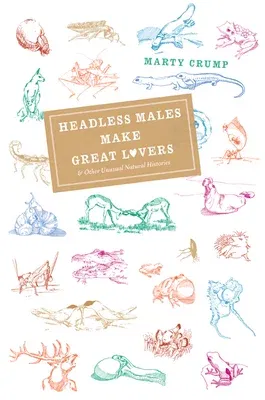The natural world is filled with diverse--not to mention quirky and
odd--animal behaviors. Consider the male praying mantis that continues
to mate after being beheaded; the spiders, insects, and birds that offer
gifts of food in return for sex; the male hip-pocket frog that carries
his own tadpoles; the baby spiders that dine on their mother; the beetle
that craves excrement; or the starfish that sheds an arm or two to
escape a predator's grasp.
Headless Males Make Great Lovers and Other Unusual Natural Histories
celebrates the extraordinary world of animals with essays on curious
creatures and their amazing behaviors. In five thematic chapters, Marty
Crump--a tropical field biologist well known for her work with the
reproductive behavior of amphibians--examines the bizarre conduct of
animals as they mate, parent, feed, defend themselves, and communicate.
Crump's enthusiasm for the unusual behaviors she describes-from sex
change and free love in sponges to aphrodisiac concoctions in bats-is
visible on every page, thanks to her skilled storytelling, which makes
even sea slugs, dung beetles, ticks, and tapeworms fascinating and
appealing. Steeped in biology, Headless Males Make Great Lovers points
out that diverse and unrelated animals often share seemingly bizarre
behaviors--evidence, Crump argues, that these natural histories, though
outwardly weird, are successful ways of living.
Illustrated throughout, and filled with vignettes of personal and
scientific interest, Headless Males Make Great Lovers will enchant the
general reader with its tales of blood-squirting horned lizards and
intestine-ejecting sea cucumbers--all in the service of a greater
appreciation of the diversity of the natural histories of animals.

